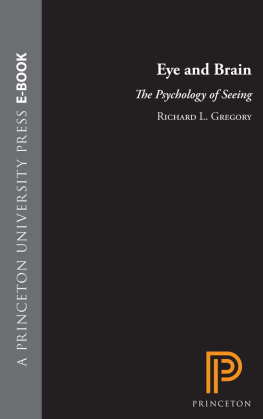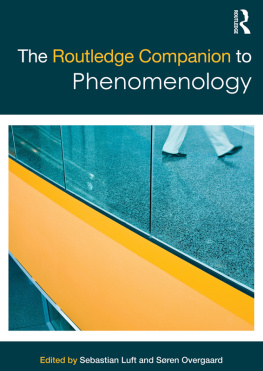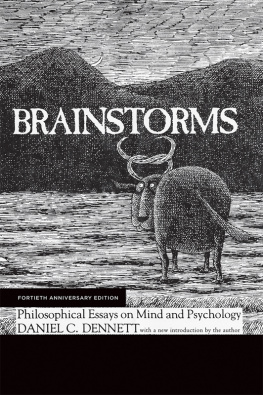Page iii
The Oxford Companion to the Mind
Edited by
Richard L. Gregory
with the assistance of
O. L. Zangwill
Oxford New York
OXFORD UNIVERSITY PRESS
Page iv
Oxford University Press, Great Clarendon Street, Oxford OX2 6DP Oxford New York Athens Auckland Bangkok Bogota Bombay Buenos Aires CalcuttaCape Town Dar es Salaam Delhi Florence Hong Kong Istanbul Karachi Kuala Lumpur Madras Madrid Melbourne Mexico City Nairobi Paris SingaporeTaipei Tokyo Toronto Warsaw and associated companies in Berlin Ibadan
Oxford is a trade mark of Oxford University Press
Published in the United States by Oxford University Press Inc., New York
Oxford University Press 1987
Tenth impression 1997
All rights reserved. No part of this publication may be reproduced, stored in a retrieval system, or transmitted, in any form or by any means, without theprior permission in writing of Oxford University Press. Within the UK, exceptions are allowed in respect of any fair dealing for the purpose of research orprivate study, or criticism or review, as permitted under the Copyright, Designs and Patents Act, 1988, or in the case of reprographic reproduction inaccordance with the terms of the licences issued by the Copyright Licensing Agency. Enquiries concerning reproduction outside these terms and in othercountries should be sent to the Rights Department, Oxford University Press, at the address aboveBritish Library Cataloguing in Publication Data Data available
Library of Congress Cataloging in Publication Data
The Oxford companion to the mind.
Includes index.
1. PsychologyDictionaries. 2. Philosophy
Dictionaries. 3. NeurophysiologyDictionaries.
I. Gregory, Richard L. II. Zangwill, O. L. (Oliver
Louis), 1913
BF31.094 1989 128'.2 871671
ISBN 019866124X
Printed in Great Britain on acidfree paper by Butler & Tanner Limited Frome, Somerset Page v
Preface
This Companion to the Mind has been companion to my mind, throughout her ten years of gestation. I am grateful for her friendship and honoured by the trust accorded me by the Oxford University Press, without whose generous help and advice through this long time she would not have been born.
Her inception followed a gleam in the farseeing eyes of Michael Rodgers, who was then an Oxford University Press editor. He approached me to take on the task of editing a Companion to the Mind, following a perhaps tooambitious scheme that I had submitted a year or two before for an Encyclopaedia of Concepts, or ideas, to cover the whole of science and even more as it would extend into philosophy and perhaps the arts. This scheme unfortunately foundered in the planning stage, as it was deemed impracticable but somehow this proposal must have led to the notion of a Companion to the Mindto be written by a wide range of authorities on as many aspects of Mind as possible: to be interesting, useful, and understandable not only to experts but to anyone interested in normal or abnormal behaviour, human potentials that might be enhanced, the biological origins and evolution of man, the deeply difficult philosophical questions of relations between Mind and matter (both in brains and computers), and those perpetually puzzling questions of free will, and what is perhaps the main mark of Mindintentionality. Some of this is necessarily technical, and much depends on certain key concepts which (and this is a criticism) are not familiar to us from our schooldays.
In particular, the structure and function of the nervous system is important for considering perception, behaviour, skill, arousal and attention, thinking, effects of drugs and of brain damage, and a great deal more. For, in a physical sense, the structure and function of the nervous system are what we are. It was, also, deafly desirable to avoid the need to define technical terms (such as 'neurone', 'synapse', and so on) in each entry where they may occur. So early on it was decided to include (for the first time in an Oxford Companion) a tutorial, on the basic plan and function of the human nervous system, together with useful definitions of oftenoccurring technical terms which might be unfamiliar. This tutorial (' Nervous System') is written by the distinguished neurologist Peter Nathan, from the National Hospital for Nervous Diseases, Queen's Square, London. All the entries, including this introduction to the physical basis of mind, are specially written for this book.
The range is wide, as the concept of Mind accepted here is far broader thin what may (at least at first) come to mind, as one thinks of Mind: especially thinking and consciousness. We do not, however, limit 'Mind' to consciousness, or awareness, for even long before Freud it was clear that a great deal goes on 'mentally' that is beyond (or beneath, or at least outside) our awareness. Here we present contributions from over a hundred experts on Page vi
many aspects of the nervous system and its functioningsand all manner of malfunctions. These focus not only on such diverse and clearly very important topics as education human, animal, and computer intelligence sex subnormalities genius learning language diminished responsibility in law drugs art a great variety of philosophical accounts, and puzzles of Mind that can intrigue all of us but also on more wayout topics (which some may reject out of hand but which we feel should be presented for discussion) such as parapsychology, and various widely held beliefs which are frankly outside science, such as blood myths and the origins of powerful fantasies such as Dracula and Frankenstein. Then there are stateoftheart technical, and specifically medical, contributions on matters of concern for many people and indeed ultimately for all of us. All these, and much more, are presented and discussed here, as Mind is widely (and we hope in some depth) considered in this book.
A problem throughout has been the inclusionor notof biographies of the many philosophers, scientists, educators, doctors, and writers of all kinds who have contributed knowledge and advanced ideas over the centuries. As it has turned out, the selection of biographies is only partial, as this is not primarily a historical work and in any case makes no claim to completeness. Following misgivings, we finally decided against the inclusion of any biographies of living persons. This should at least protect us from some inevitable criticisms of omission! On the other hand, the work and views of very many people, both living and dead, are discussed in appropriate subject entries their names can be found in the index (p. 821).
How were the contents planned? They were based on an initial list of topics of just about everything one could conceive of as relevant, having possible interest or use.
Appropriate lengths were estimated, and authors (at first mainly friends and colleagues from around the world) were selected and invited to contribute. Then the fun startedand went on and on for years and years. The correspondence files grew even faster than the piles of manuscripts, and many were the bribes, threats, promises, and shared jokes (which were especially effective and mutually rewarding), which were vital stimuli for actionbut now lie silent in the dark, their work done.
Angela Sainsbury, then Kate Tiffin, spent many evenings not only typing letters and sorting and filing, but suggesting new entries and improvements. Their careful work and enthusiasm is greatly appreciated. Following the vital initial work at the press by Michael Rodgerswho was both soundingboard and his own voice, as we walked in the meadows in Oxford, lunching at the Trout, while building up the book in our mindsthe responsibility devolved upon Bruce Phillips, Dorothy McCarthy, Nick Wilson, and Christopher Riches, then finally on Pam Coote who focused the enterprise to completion undertaking with wonderful effectiveness the intimidating task of cutting entries down to size, and with her colleagues going through the proofs. It is very important (as by now I have learned several times) for an editor, or author, to have ready understanding and mutual trust (which must, however, be based on Page vii
Next page










